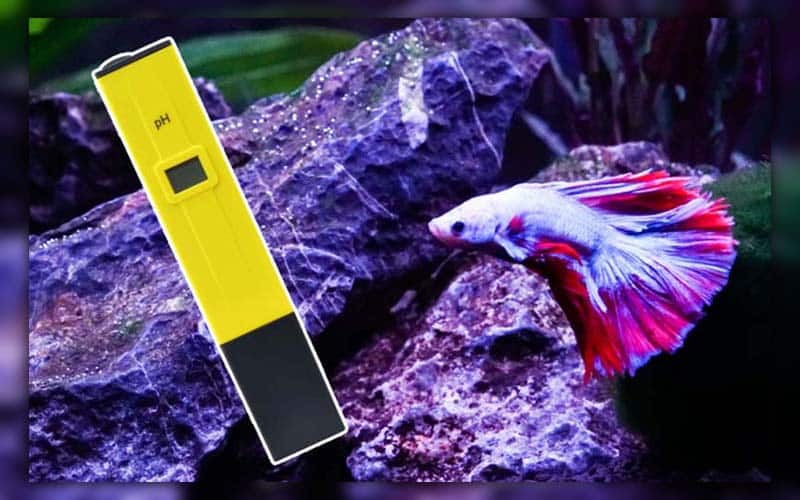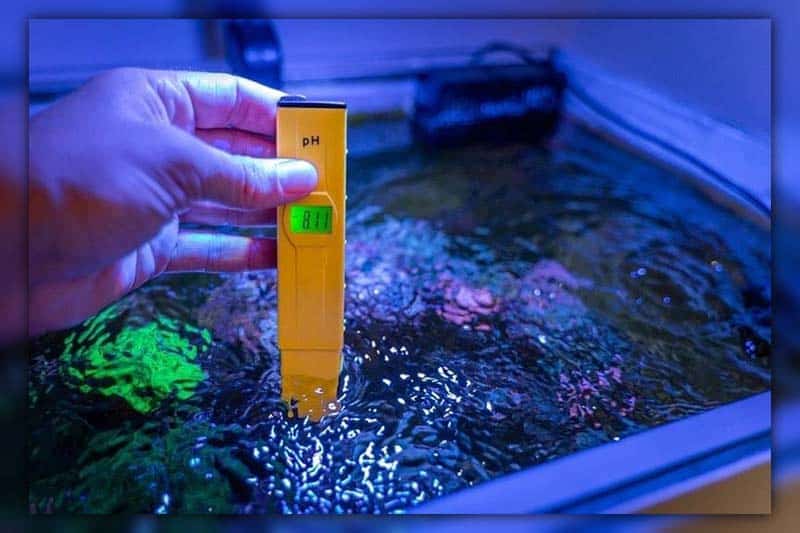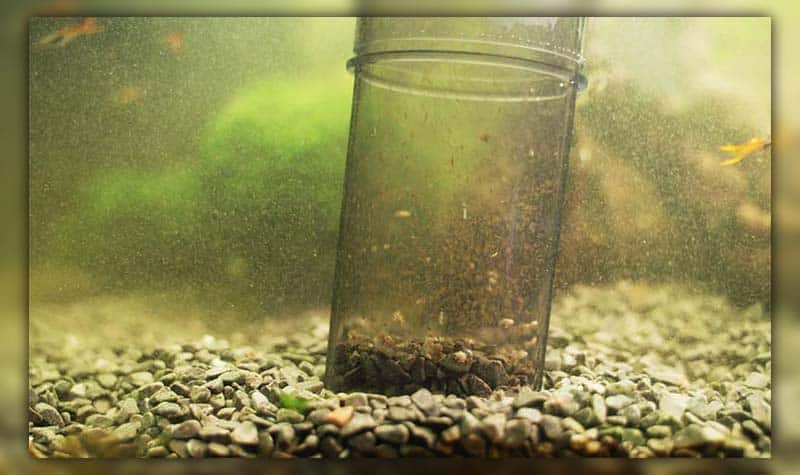Betta fish, commonly known as Siamese fighting fish, are renowned for their vibrant colors and elegant, flowing fins. Native to the freshwater basins of Southeast Asia, these small yet captivating creatures have specific habitat requirements that need to be met to ensure their overall health and longevity. One of the most vital parameters to monitor in a Betta fish tank is the pH level. The pH measures the acidity or alkalinity of water on a scale of 0 to 14.
In this guide, we’ll delve into the importance of choose the best pH for Betta fish and provide insights into how you can create the optimal aquatic environment for your finned friend. Whether you’re a beginner Betta keeper or an experienced hobbyist, understanding the intricacies of water chemistry can make all the difference in the well-being of your pet.
What Is The Best pH Level for Betta Fish Tanks?
Betta fish like in a slightly acidic environment with a pH level around 7.0. They can tolerate a range of 6.5 to 8, but stability is crucial.
Avoid pH fluctuations, as they can harm your betta’s health. Keeping a consistent betta pH level benefits the well-being of your cherished betta.

How pH Level Affects Bettas?
Maintaining an ideal pH level for betta fish is vital for their well-being. While they might tolerate slightly acidic conditions, it’s best to avoid pushing their limits.
Suboptimal pH in betta tanks can lead to pH shock, a condition caused by sudden shifts in water acidity or alkalinity. Fortunately, pH shock doesn’t result in immediate fish death.
However, prolonged exposure to incorrect pH levels increases the risk of harm. Bettas can endure slightly more acidic water, but extreme deviations should be prevented. Timely intervention is key to saving your betta population, but accurate diagnosis is essential.
Symptoms of pH shock vary based on whether the pH is too low or too high. Further insights are provided below.
Symptoms of Low pH and High pH in Water
Low pH and High PH levels in aquariums manifest through various symptoms. Not all indicators are solely visible in your betta, some extend to other tank elements like plants, decorations, and tank companions.
- Prolonged stress, leading to stunted growth and heightened vulnerability to illnesses
- Mucus overproduction, which can clog the gill membranes and lead to asphyxiation Betta
- Most fish perish at pH levels below 5
- Suboptimal reproductive outcomes
- Increasing acidity weakens snail shells or hinders shell growth due to its impact on shell calcium content.
- Elevated alkalinity might foster disease prevalence.
- Strange Betta Behaviour.
- The abrupt surge in algae growth.
- Skin abrasions due to highly alkaline water stripping away the fish’s protective mucous layer.
- Harm to gills, eyes, and skin.
- Elevated vulnerability to harmful substances (e.g., ammonia’s toxicity increases tenfold at a pH of 8 compared to a pH of 7).
Factors That Lower pH in Betta fish tanks
For newcomers to fishkeeping, upholding optimal water conditions for bettas can pose challenges. Understanding the triggers behind increased water acidity and recognizing associated symptoms empowers you to address this issue effectively.
Below are the key contributors to heightened aquarium acidity, akin to the factors influencing alkalinity. These culprits are responsible for pH level betta decrease:

1. Tank Decorations or Ornaments
The presence of decorations within your tank could potentially lead to a decline in pH levels. Historically, betta keepers have utilized items like driftwood to counteract high pH levels.
This effect is well-documented. It’s possible that certain decorations in your tank might inadvertently contribute to this pH reduction process.
Natural decorations, particularly wood and leaves, are more likely to induce this change.
2. Water Type
The source of water you employ for your Betta aquarium is another prevalent factor contributing to heightened acidity. Tap water can exhibit both acidic and alkaline characteristics, contingent upon your geographical location.
For those using tap water, it’s advisable to routinely monitor its pH level and Ph balance for betta fish. Employing a dependable water testing kit offers accurate readings, empowering you to manage the situation effectively.
If tap water is identified as the cause, transitioning to bottled spring water can foster improved conditions.
3. Nitrogen Cycle
Surprisingly, the nitrogen cycle gradually contributes to a decline in tank pH levels, resulting in increased acidity. This effect is more pronounced in newer betta tanks, where the process occurs rapidly. With the passage of time, as tanks mature, this process slows down, although it remains ongoing.
A key strategy to counteract this is adhering to the practice of 25% water changes every few weeks. This routine helps alleviate accumulated acidity by replacing some of the existing acidic water with fresh water, thus maintaining a more balanced environment.
4. Too Many Fish in Tank
An additional factor leading to reduced pH levels in a betta tank is overcrowding. Excessive fish population within a tank can elevate ammonia levels, triggering a pH decline.
Ammonia levels rise due to fish waste breaking down into ammonia. Naturally, a greater number of fish translates to increased ammonia production.
To mitigate this, ensure that the fish count in your tank aligns with its safe capacity. Avoid overstocking to maintain a pH balanced for betta fish.
5. Sick Fish
Ailing bettas can contribute to pH reduction. Illness often leads to reduced appetite, leaving uneaten food that raises ammonia levels.
Certain illnesses can elevate waste production, further increasing ammonia and lowering pH.
Vigilance is key. Monitor your betta for signs of illness and promptly seek veterinary care when needed to prevent pH disruptions stemming from sick fish.
6. Dead Fish
The presence of a deceased fish in your betta’s tank can contribute to pH decline. Decomposition of dead fish releases toxic ammonia into the water, posing health risks to bettas.
Prompt action is crucial. Remove any deceased fish from the tank without delay to avert pH imbalances resulting from decaying matter.
Factors that Contribute to High pH Levels for Betta Tank
Maintaining a pH level beyond 7.0, such as 7.6, is discouraged for betta fish and requires swift resolution. A pH surpassing 7.0 can yield unfavorable outcomes. While bettas tolerate minor pH shifts, their optimal state is neutral water at 7.0 pH. Still, betta fish can endure a pH range of 6.5 to 8.
Identifying pH imbalances and their indicators is relatively straightforward. High or low pH can evoke diverse symptoms, not necessarily all evident in your betta. Monitoring other tank inhabitants, live plants, decorations, and ornaments can offer insights into fish water pH.

1. The Water Type
Once more, the water you employ can directly influence betta fish pH balance. In regions with mineral-rich water, elevated pH is probable due to calcium accumulation and other minerals.
To counteract this, consider abstaining from tap water usage. Opt for bottled spring water, but refrain from using distilled water. Distilled water lacks the essential minerals and nutrients necessary for your betta’s survival.
2. Decaying Organic Matter
The decomposition of organic matter, like leftover food and fish waste, can elevate tank pH. This arises from the release of ammonia during decay.
Ammonia poses significant risks to bettas, potentially causing severe health issues with excessive levels.
To avert ammonia buildup, promptly remove uneaten food and execute regular water changes in your betta’s tank.
3. Waste and Bioload
Beyond ammonia elevation from fish waste, it’s important to note that urea, a component of fish waste, can impact water pH levels.
In essence, a tank lacking efficient water filtration faces the prospect of pH increase. Alongside fish waste, uneaten food residues can also contribute to pH spikes. Prioritizing cleanliness in your aquarium can prevent potential pH-related complications.
4. Fish Tank Base Layer
Experienced aquarists are likely familiar with the impact of substrate choices on pH. Notably, coral sand or crushed coral can influence tank pH due to their calcium content. These substrates release calcium into the water, elevating alkalinity.
Consequently, seasoned fish enthusiasts caution against using coral as substrate for betta tanks. Optimal substrate choices encompass gravel and sand to maintain suitable betta fish pH levels.
How to Optimal pH for Betta Fish
If your betta tank’s pH level is outside the optimal range, corrective measures are necessary. The approach to adjust pH depends on whether it’s too high or too low. Let’s begin with lowering pH.
Raising pH Levels for Betta Fish
Bettas generally tolerate slightly acidic conditions well. To elevate pH:
- Crushed Coral or Limestone: Incorporate crushed coral or limestone as substrate components. These substances slowly release calcium carbonate, which raises pH.
- Baking Soda: Introduce a small amount of baking soda to the water. This can gently increase pH levels.
- Mineral Rocks: Some mineral rocks, like limestone or aragonite, can naturally increase pH. Ensure they’re aquarium-safe and clean before use.
- Water Aeration: Increased aeration can help raise pH levels by expelling carbon dioxide, which can lower pH.
Lower pH Level in Betta Tank in Betta Tank
Bettas tend to endure slightly acidic conditions better than overly alkaline ones. To decrease pH:
- Partial Water Changes: Gradually replace a portion of the tank water with water that has a lower pH. This helps dilute the current pH.
- Use pH-Lowering Products: Commercial products designed to lower pH are available. Follow instructions on the product carefully to avoid drastic changes.
- Use Peat Moss or Driftwood: These natural items can gently lower pH over time. Make sure they’re thoroughly rinsed and properly prepared before adding to the tank.
- Indian Almond Leaves: Employ Indian almond leaves to gently lower pH. These leaves release beneficial compounds that create a more suitable pH environment.
Rapid pH changes can stress your bettas. Therefore, aim for gradual adjustments and monitor pH levels to ensure stability.
For larger tanks, investing in a reverse osmosis filter is an option. Though they can be costly, they effectively manage alkalinity concerns and reduce manual pH control efforts.
How To Test The pH Level Of Water In An Aquarium
Testing the pH of aquarium water is a vital step in maintaining optimal conditions for your fish. Follow these steps to test the pH level accurately:
Choose a Test Kit: Opt for a pH test kit or test strips available in the market. Test kits provide more detailed results but require more effort, while strips offer simplicity and are parameter-specific. Seek advice from experienced aquarists and research to find the best fit for your requirements.
Using Testing Strips
- Tear a strip from the testing kit.
- Dip the strip into the aquarium water for the specified duration.
- Remove the strip and allow it to dry.
- Match the color of the dried strip to the corresponding color on the provided chart in the kit. This color comparison will give you the pH level.
Using Test Kits:
- Follow the instructions provided in the test kit.
- Usually, the kit will instruct you to add a specific number of drops of the testing solution into a water sample from your aquarium.
- Compare the color of the solution after adding the drops to the color chart provided in the kit. This will give you the pH reading.
Interpreting the Results: The color match will give you a pH reading. A pH of 7 is neutral. Numbers lower than 7 indicate acidity, while numbers higher than 7 indicate alkalinity.
How to test PH Levels: Source “OceanStateAquaticsTV”
What pH is Too High for Betta Tank?
A pH above 8.0 is considered too high for a betta tank. While bettas can tolerate a range of pH levels from 6.0 to 8.0, it’s best to keep the pH within this range for optimal health and comfort. If the pH goes significantly beyond 8.0, it can cause stress and potential health issues for the betta.
Conclusion
Maintaining the proper pH level in your betta fish tank is crucial for their well-being. Inappropriate pH can lead to various health issues for your fish.
Therefore, it’s essential to understand how to adjust the pH level as required. By adhering to the guidance from National Park Aquarium, you can ensure that your betta’s tank maintains an ideal pH, contributing to their overall health and happiness.
Remember, achieving the best pH for betta fish is just one aspect of responsible betta fish care.




